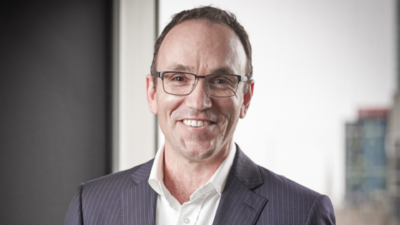Time to drop 60:40 asset allocation, shift from passive
A tried and true allocation of 60 per cent growth assets and 40 per cent defensive, if still in use by advisors, presents “serious risks to advisors and their clients”, according to Jerome Lander, portfolio manager at Dynamic Asset Consulting, a provider of managed discretionary accounts, principally for financial planners. While most big investors abandoned a simple 60:40 mix years ago, it appears difficult to shift from the mindset of those who are closer to the end investor.
Lander, a former asset consultant at Russell Investments, who also runs his own advisory business, ProCapital, believes that most advisors are still operating their client portfolios based on the view that interest rates will continue to fall and inflation will continue to be low. The new reality was that rates were bottoming out and couldn’t fall much further in an historical context. “If they do, then mainstream asset prices are probably in big trouble anyway,” Lander said. “In the US we are seeing the effects of abnormal policies, including big tech names like Apple and Tesla being thrown around on pure speculation in what is becoming an increasingly erratic asset pricing environment.”
The benign environment of the past was unlikely to be relevant in the future. “This is a key inflection point in markets and an opportunity for advisers to protect their clients and their business from what is coming. The world has changed,” he said. The traditional 60:40 strategic asset allocation could completely fall apart in an inflection point. It was very risky and there was an urgent need for action.
“The bubble is not actually just in equities as most people think – it is in bonds and traditionally defensive assets. We could be entering an environment where you get absolutely no return out of cash and bonds, and little on property and equities over time. We could also see bonds and their proxies get totally destroyed, particularly if we get stagflation.” he said.
“Defensive assets are broken. Growth assets are expensive. Passive investing no longer works. In this environment an active, dynamic approach to investing has become critical,” he said. “It is probably one of the worst times to be an index investor, yet one of the best times in history to be an active investor as a result of the distortions we are seeing in markets.” But there were many areas of the market that were sensible places to allocate capital but which weren’t attracting general attention.
Mathew Walker, the managing director and founder of Dynamic Asset, in 2013, said it had become increasingly clear in recent months that financial advice practices required a different way of managing client portfolios to generate absolute returns. “Tracking the market with passive index funds and failing to manage the new and increasing risks just won’t deliver the results that investors need,” he said. “What the wise do in the beginning, fools do in the end.”
– G.B.











